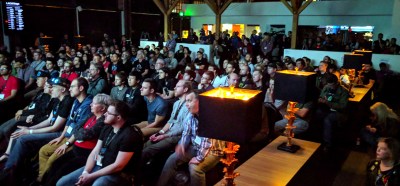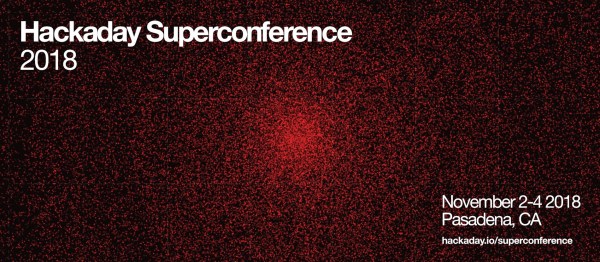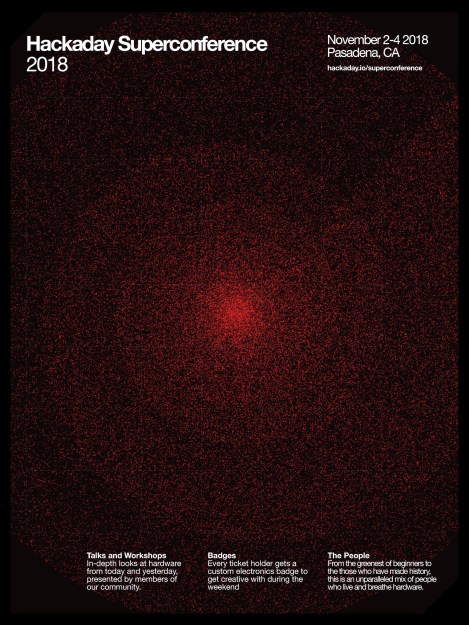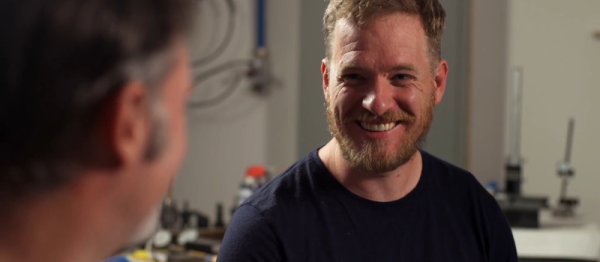We’re absolutely excited to be able to announce that the Hackaday Supercon is on for 2023, and will be taking place Nov 3 – Nov 5 in sunny Pasadena CA. And with that, we’d like to open the floodgates: we’d like to hear your proposals for talks and workshops! The Call for Speakers and Call for Workshops forms are online now, and you’ve got until July 18th to get yourself signed up.
Superconference23 Articles
A Fantastic Frontier Of FPGA Flexibility Found In The 2019 Supercon Badge
We have just concluded a successful Hackaday Superconference where a highlight for many was digging into this year’s hardware badge. Shaped in the general form of a Game Boy handheld gaming console, the heart of the badge is a large FPGA opening up new and exciting potential for badge hacking.
Beyond our normal tools of compiling custom code or modifying hardware with a soldering iron, we now have the option to change core hardware behavior with Verilog. And people explored this new frontier to great effect, as seen at the badge hacking ceremony. (Video embedded below.)
FPGAs are not new, technically speaking, why are they exciting now? We can thank their recent growth in capability, their rapidly falling cost, and the relatively new availability of open source toolchains. These developments elevated FPGA into one of the most exciting trends in hardware today, so this year’s badge master [Sprite_TM] built an open FPGA playground for several hundred of his closest Supercon friends. Let’s take a look at what people were able to accomplish in just a few days using this unique and powerful hardware.
Continue reading “A Fantastic Frontier Of FPGA Flexibility Found In The 2019 Supercon Badge”
Towards Low Cost Biomedical Imaging
Medical imaging is one of the very best applications of technology — it allows us to peer inside of the human body without actually performing surgery. It’s non-destructive testing to the extreme, and one of the more interesting projects we’ve seen over the past year uses AC currents and an infinite grid of resistors to image the inside of a living organism. It’s called Spectra and it is the brainchild of [Jean Rintoul]. Her talk at the Hackaday Superconference is all about low cost and open source biomedical imaging.
We’ve seen some interesting medical imaging hacks in the Hackaday Prize over the years. There have been vein finders and even a CT scanner, but when it comes to biomedical imaging, the Spectra project is something different. Right now, it’s just good enough to image organs while they’re still inside your body, and there’s still a lot of potential to do more. Let’s take a closer look a how this works.
Hackaday Links: October 28, 2018
Steve Jobs was actually a good designer and CEO. This is a statement that would have been met with derision in 2010, with stories of a ‘reality distortion field’. We’re coming up on a decade in the post-Jobs era, and if there’s one thing the last seven or eight years can tell us, it’s that Jobs really, really knew how to make stuff people wanted. Apart from the iPhone, OS X, and the late 90s redesign of their desktops, the most impressive thing Jobs ever did was NeXT. Now there’s book that describes the minutia of all NeXT hardware. Thanks to the Adafruit blog for pointing this one out.
Speaking of Apple, here’s something else that’s probably not worth your time. It’s a highly exclusive leak of upcoming Apple hardware that’s sure to change everything you know about tech. Really, it’s a floating hockey puck branded with the Apple logo. No idea what this is, but somebody is getting some sweet, sweet YouTube ad revenue from this.
A few years ago, [Tom Stanton] built an electric VTOL plane. It looked pretty much like any other foam board airplane you’d find, except there were motors on the wingtips a lá an Osprey. Now, he’s massively improving this VTOL plane. The new build features a 3D printed fuselage and 3D printed wing ribs to give this plane a proper airfoil. Despite being mostly 3D printed, this VTOL plane weighs less than half of the first version. Also, a reminder: VTOL planes (or really anything that generates lift from going forward) are the future of small unmanned aerial craft. Better get hip to this now.
Next weekend is the Hackaday Superconference, and you know we’re going to have an awesome hardware badge. It’s a badge, that’s a computer, and has a keyboard. What more could you want? How about an expansion header? Yeah, we’ve got a way to add a shift register and 8 LEDs to the badge. From there, you can do just about everything. Who’s going to bring an old parallel port printer?
Hackaday Superconference: Tickets And Proposals
Get your tickets now for the 2018 Hackaday Superconference. Join us November 2nd-4th in Pasadena, California!
This is the ultimate hardware conference. Hackers, designers, and engineers from all over the world converge — from the greenest beginners to those who have made history with their designs. This is the Hackaday community, these are your people, and you need to be here. Supercon is your chance to experience all things involved in hardware creation — the weekend is filled with unparalleled talks and workshops — but the experience of Supercon transcends the organized event. We call it a conference but it’s truly a hacker village with a who’s-who of hackerdom in attendance.
Call for Proposals
We want you to present a talk (or a workshop) at this year’s Supercon! Please submit your proposal using this form.
The number one question we get about CFP is “I’m excited about X, should I submit a proposal?” The answer is yes. Don’t self-eliminate — if you have an idea for a talk we want to hear from you. Supercon is a flat conference, your proposal will be judged on the idea and how you plan to present it, not on how many other amazing speaking slots you’ve secured.
To help get your mind moving about topics, we suggest that you consider this list of themes your talk might fit into: Engineering Heroics, Prototyping, Research, Product Development, Full-Stack Fabrication, and of course Wildcard.
Tickets! Get Your Tickets Here!
Are you a true believer? We’ve just opened up the Call for Proposal today, so we can’t tell you who’s speaking or what workshops will take place. However, we suspect there are many of you ready to take the plunge right now. Those first 96 true believers get an incredibly low ticket price of $128.

Even at full price, the admission fee is an incredible value (see for yourself). Each ticket comes with admission for all three days, a custom hardware badge to hack on, admission to the Friday kick-off party and Saturday Hackaday Prize party, food and beverage throughout the conference, and much more.
This is the fourth year we’ve hosted the Hackaday Superconference. You can check out all of the talk videos from last year, there’s a slew of articles on the event, and of course an incredible hardware hacking scene throughout. In large part, the packed and jovial community atmosphere is why we’ve added Friday as a full day of workshops and badge hacking!
Get your ticket and book your travel. We look forward to hanging out with a huge chunk of the Hackaday community at Supercon!
Scotty Allen Visits Strange Parts, Builds An IPhone
Scotty Allen has a YouTube blog called Strange Parts; maybe you’ve seen his super-popular video about building his own iPhone “from scratch”. It’s a great story, and it’s also a pretext for a slightly deeper dive into the electronics hardware manufacturing, assembly, and repair capital of the world: Shenzhen, China. After his talk at the 2017 Superconference, we got a chance to sit down with Scotty and ask about cellphones and his other travels. Check it out:
The Story of the Phone
Scotty was sitting around with friends, drinking in one of Shenzhen’s night markets, and talking about how bizarre some things seem to outsiders. There are people sitting on street corners, shucking cellphones like you’d shuck oysters, and harvesting the good parts inside. Electronics parts, new and used, don’t come from somewhere far away and there’s no mail-ordering. A ten-minute walk over to the markets will get you everything you need. The desire to explain some small part of this alternate reality to outsiders was what drove Scotty to dig into China’s cellphone ecosystem.
Continue reading “Scotty Allen Visits Strange Parts, Builds An IPhone”
Christal Gordon: Sensors, Fusion, And Neurobiology
Some things don’t sound like they should go together, but they do. Peanut butter and chocolate. Twinkies and deep frying. Bacon and maple syrup. Sometimes mixing things up can produce great results. [Dr. Christal Gordon’s] expertise falls into that category. She’s an electrical engineer, but she also studies neuroscience. This can lead to some interesting intellectual Reese’s peanut butter cups.
At the 2017 Hackaday Superconference, [Christal] spoke about sensor fusion. If you’ve done systems that have multiple sensors, you’ve probably run into that before even if you didn’t call it that. However, [Christal] brings the perspective of how biological systems fuse sensor data contrasted to how electronic systems perform similar tasks. You can see a video replay of her talk in the video below.
Continue reading “Christal Gordon: Sensors, Fusion, And Neurobiology”

















